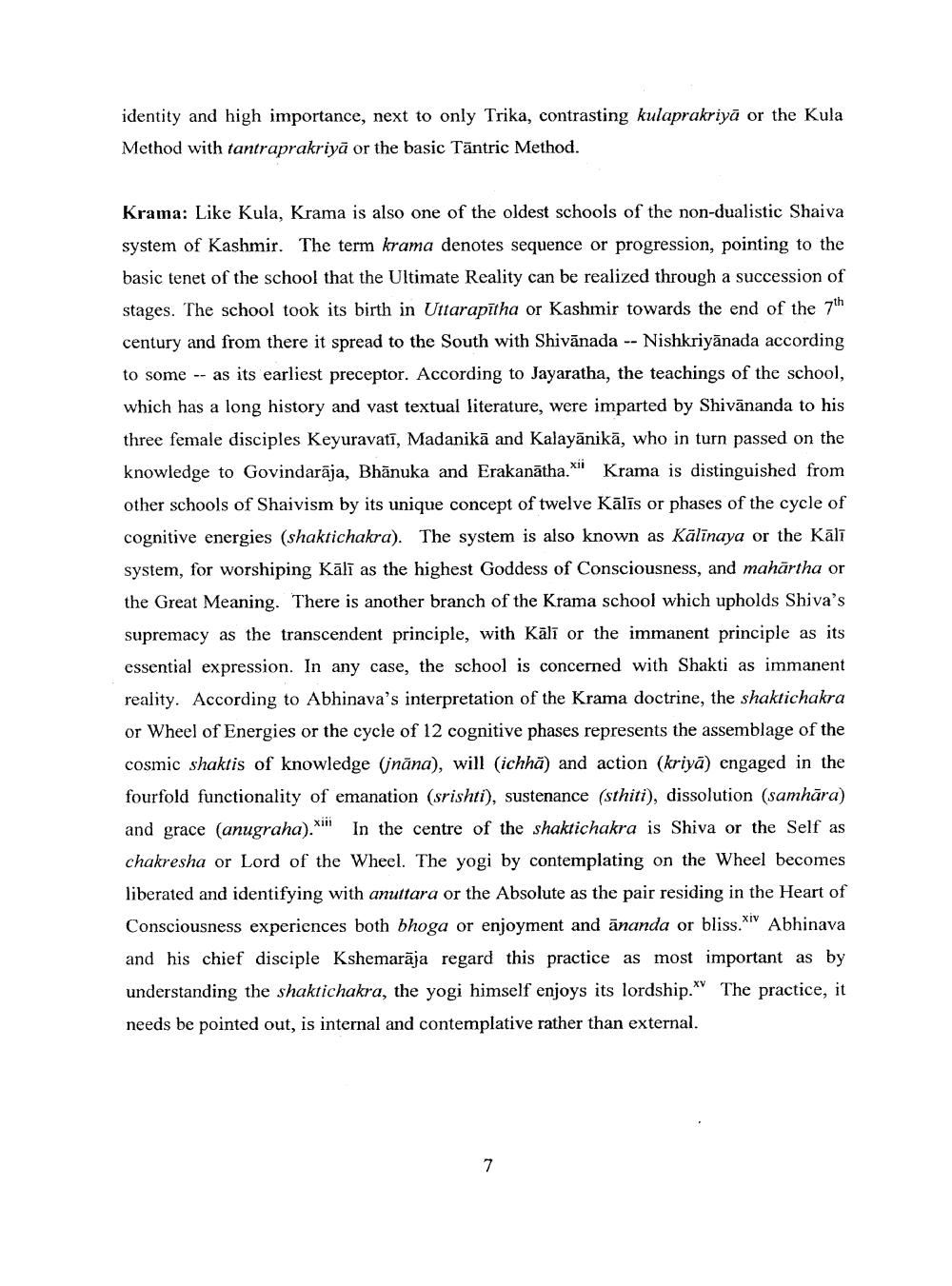Book Title: Yoga of Synthesis in Kashmir Shaivam Author(s): S S Toshkhani Publisher: S S Toshkhani View full book textPage 7
________________ identity and high importance, next to only Trika, contrasting kulaprakriyā or the Kula Method with tantraprakriyā or the basic Tāntric Method. Krama: Like Kula, Krama is also one of the oldest schools of the non-dualistic Shaiva system of Kashmir. The term krama denotes sequence or progression, pointing to the basic tenet of the school that the Ultimate Reality can be realized through a succession of stages. The school took its birth in Uttarapītha or Kashmir towards the end of the 7th century and from there it spread to the South with Shivānada -- Nishkriyānada according to some -- as its earliest preceptor. According to Jayaratha, the teachings of the school, which has a long history and vast textual literature, were imparted by Shivānanda to his three female disciples Keyuravatī, Madanikā and Kalayānikā, who in turn passed on the knowledge to Govindarāja, Bhānuka and Erakanātha. Xii Krama is distinguished from other schools of Shaivism by its unique concept of twelve Kālīs or phases of the cycle of cognitive energies (shaktichakra). The system is also known as Kālīnaya or the Kālī system, for worshiping Kāli as the highest Goddess of Consciousness, and mahārtha or the Great Meaning. There is another branch of the Krama school which upholds Shiva's supremacy as the transcendent principle, with Kālī or the immanent principle as its essential expression. In any case, the school is concerned with Shakti as immanent reality. According to Abhinava's interpretation of the Krama doctrine, the shaktichakra or Wheel of Energies or the cycle of 12 cognitive phases represents the assemblage of the cosmic shaktis of knowledge (jnāna), will (ichhā) and action (kriyā) engaged in the fourfold functionality of emanation (srishti), sustenance (sthiti), dissolution (samhāra) and grace (anugraha). In the centre of the shaktichakra is Shiva or the Self as chakresha or Lord of the Wheel. The yogi by contemplating on the Wheel becomes liberated and identifying with anuttara or the Absolute as the pair residing in the Heart of Consciousness experiences both bhoga or enjoyment and ānanda or bliss. i Abhinava and his chief disciple Kshemarāja regard this practice as most important as by understanding the shaktichakra, the yogi himself enjoys its lordship. The practice, it needs be pointed out, is internal and contemplative rather than external.Page Navigation
1 ... 5 6 7 8 9 10 11 12 13 14 15 16 17 18 19 20 21 22 23 24 25 26 27 28 29 30 31 32 33 34 35 36 37 38 39 40 41 42 43 44 45 46
